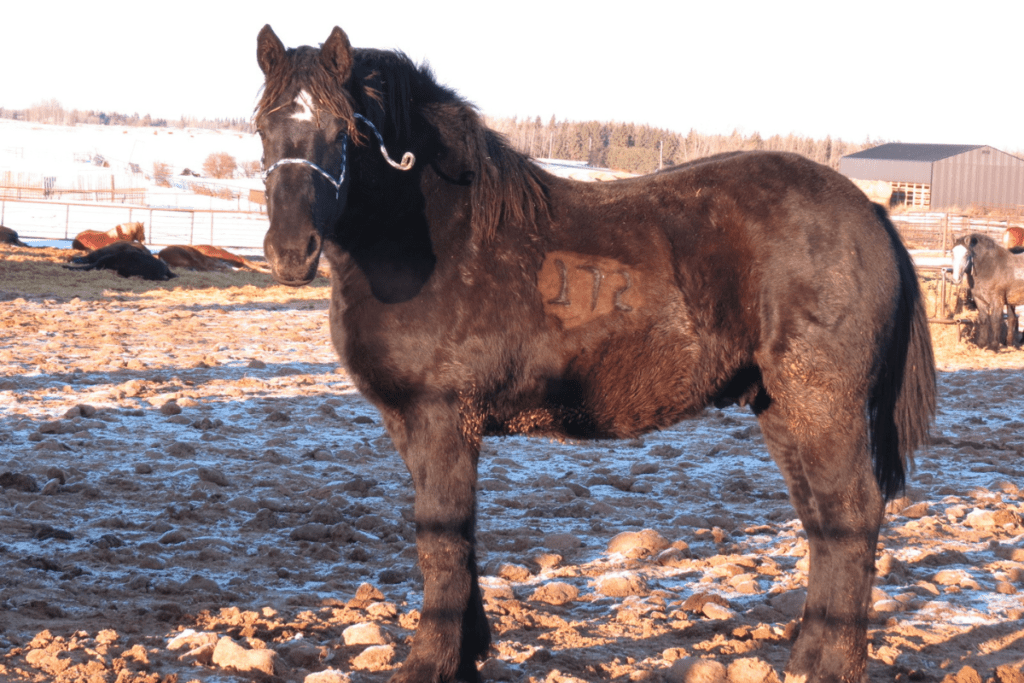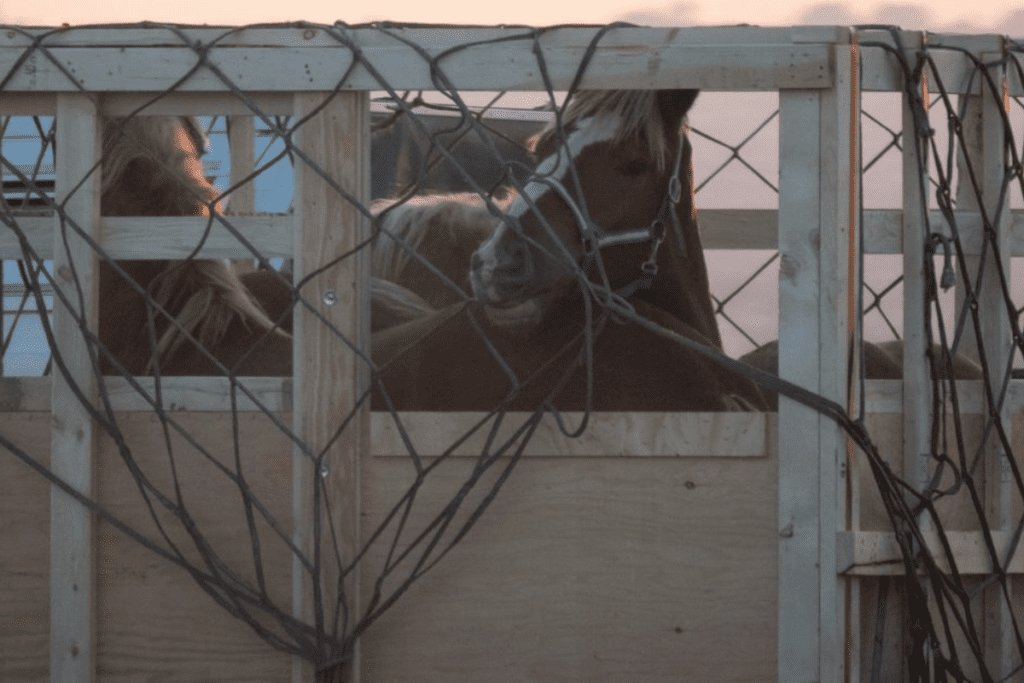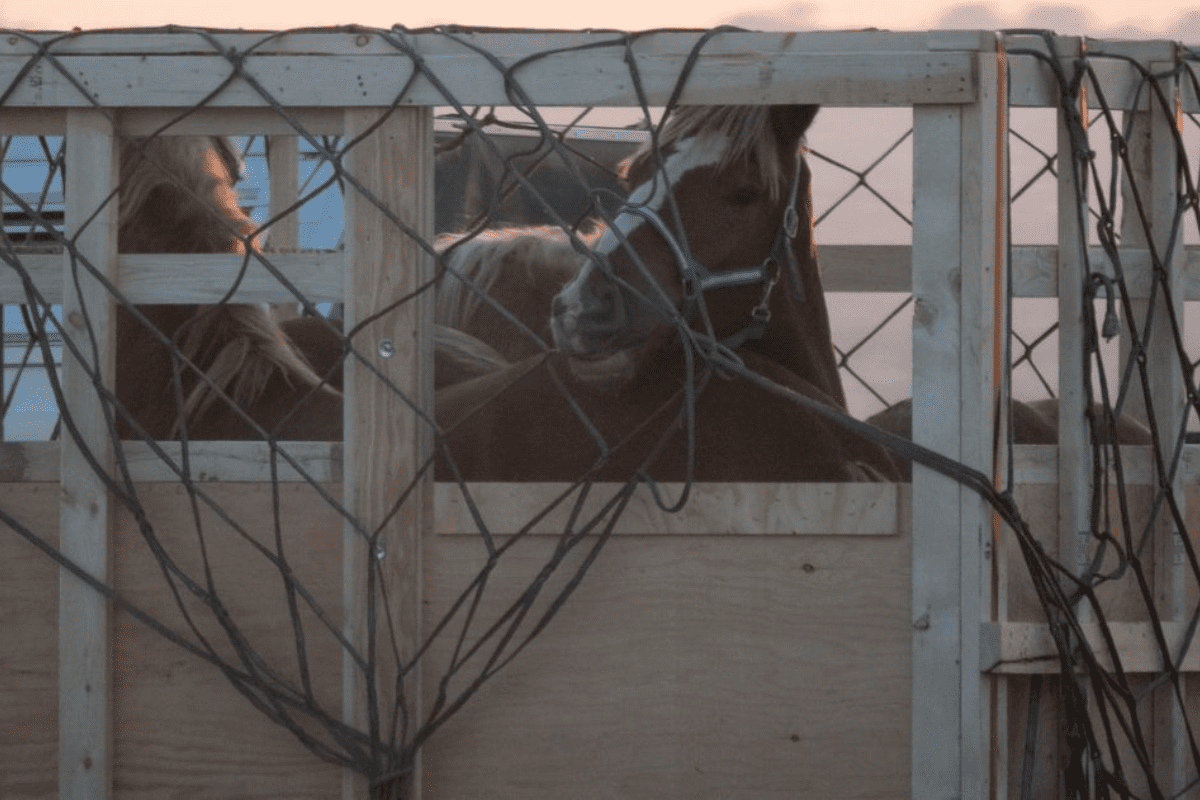Article originally published in The Daily Hive.
Sunday night on the cold tarmac of Winnipeg Airport, a gentle horse stood in a crate, waiting to be loaded onto an airplane. The horse had no name; he and the thousands of horses like him who are shipped out of Canada each year are known only by their identification numbers. He was one of more than 100 horses loaded onto a flight destined for Japan, headed an ocean away to be slaughtered for human consumption.
The flight took off 361 days after Prime Minister Trudeau directed the minister of agriculture to ban the live export of horses for slaughter in a mandate letter on December 16, 2021.
It has now been exactly a year since that letter was sent. Since then, no action has been taken, and the bodies of horses destined for slaughter have continued to pile up.
BREAKING: Another shipment of horses was just sent from Winnipeg to Japan for slaughter 💔
— Animal Justice (@AnimalJustice) December 12, 2022
Singer-songwriter @jannarden says it’s been a YEAR this week since ag minister @mclaudebibeau was mandated to end this practice 👎 pic.twitter.com/LeywkK5nUN
It’s impossible to know exactly what happened to the horse without a name – the Government of Canada has no jurisdiction over foreign slaughter practices after animals touch down in another country, out of the sight and mind of the many Canadians who consider them to be beloved companions. But we have a general idea of what happened to the horses on his flight.

The journey from a Canadian feedlot where horses are raised to their final destination overseas can take up to 28 hours; a full day in which they are deprived of food, water, and rest. It’s common for three or four horses to make the journey cramped together in a single wooden crate, with their ears poking through the top slats.
Before 2020, regulations dictated that horses must be shipped in their own crates with adequate head clearance. After the Canadian Horse Defence Coalition (CHDC) took the Minister of Agriculture and the Canadian Food Inspection Agency (CFIA) to court over illegal breaches of transport regulations, the minister acted swiftly – not by changing the practices to meet animal welfare standards, but by changing the law to fit inhumane conditions.
“It is not acceptable to compromise horse welfare in favour of industry interests,” said CHDC President Sinikka Crosland. “Neither should the law be manipulated in order to meet those interests.”

On noisy airplanes, these gentle herd animals with a strong fight or flight instinct go through a long journey of fear and stress. Some fall down upon takeoff or landing. A 2014 incident report indicated that a horse, who appeared agitated during loading, fell during takeoff and remained down during the flight. The horse thrashed and kicked through the crate, damaging the airplane and forcing an emergency landing. After landing, the horse was found dead in the crate, next to two other horses.
With last year’s mandate letter, our government acknowledged the need to put an end to the live export of horses for slaughter. Yet around 2,000 horses have been exported since the federal minister of agriculture was directed to end the practice.
Every month that the Ministry of Agriculture shirks the commitment outlined in its mandate letter, more horses suffer needlessly.
Thousands of Canadians have joined the movement, headed by advocates like the Canadian Horse Defence Coalition and Canadian singer-songwriter Jann Arden, calling for an end to the long and stressful transport journeys of horses being shipped to slaughter. With the recent launch of a new federal petition calling for the minister to finally end live horse export for slaughter, there is no doubt that many more voices will join the cry for justice.

